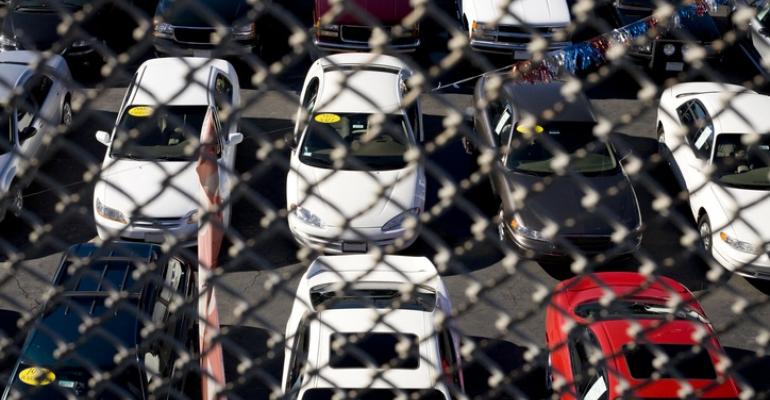U.S. auto sales this month started out not great, but OK, as a national health crisis loomed. Then, pow. The situation worsened day by day.
It leads to a dire question: How bad can it get for auto sales in coming months? A J.D. Power report on the impact of the COVID-19 virus tries to answer that, as much as it can.
“There are so many variables and we’re not virus experts,” Tyson Jominy, a J.D. Power vice president for data and analytics, tells Wards. “It’s not like when a hurricane hits and historically you expect sales will later recover, even increase as people replace lost vehicles. This is different. We have a long way to go.”
The March sales tracking is telling. Early in the month, the pandemic took a minimal toll on U.S. auto sales.
 Then came the slide as the crisis gripped the nation even tighter, with a growing number of reported infections, government and business shutdowns and more people sheltering themselves in their homes. The latter meant not going to dealerships to buy vehicles. (Tyson Jominy, left)
Then came the slide as the crisis gripped the nation even tighter, with a growing number of reported infections, government and business shutdowns and more people sheltering themselves in their homes. The latter meant not going to dealerships to buy vehicles. (Tyson Jominy, left)
According to J.D. Power sales tracking, auto sales for the week ending March 8 declined only 1%. March 9-12 (Monday through Thursday) saw an 8% drop. That was followed by a 20% decline on Friday and Saturday (March 13-March 14). Then came a 36% drop on Sunday, March 15. (Although dealerships are closed on Sunday in some markets, they remain open that day in others, particularly the West Coast.
“There was a similar drop the next day,” Jominy says, predicting the health emergency’s negative effect on new-vehicle sales will intensify throughout March.
The deeper fear is that if this keeps up, 2020 auto deliveries may go south, ending up in Tierra del Fuego.
To understand how the virus may affect the auto industry over the next five months, J.D. Power modeled near-term U.S. new-vehicle sales, using the market conditions of China as a baseline.
J.D. Power created low/medium/high severity scenarios where the virus follows a 12-week cycle of escalation to recovery.
The company projects the retail sales declines from these scenarios would be 800,000 (low scenario), 1.7 million (medium scenario) and 3.1 million (high scenario) between March and July.
“We expect the medium scenario is currently the most likely, but that could change as events transpire,” Jominy says.
Sales would particularly suffer if dealerships close by government order. That would stop new-vehicle sales in affected areas unless dealerships were classified as “essential businesses.”
Dealer trade groups, such as the American International Automobile Dealers Assn., are lobbying for the government to declare dealerships as that.
Ironically, the public health crisis could give digital automotive retailing the traction it’s been looking for.
Jominy notes most automakers and their retailers have the technology-enabled ability to sell vehicles with minimal in-person interaction. While online buying and vehicle-delivery services have been relatively modest, they could take off with so many Americans isolated in their homes.
“Increasing consumer awareness of new ways to purchase and receive delivery of a vehicle will be a key activity for manufacturers and retailers in the coming weeks,” Jominy says, adding that “dealers are among the sharpest people in the country; they’ll do whatever it takes.”
Of late, heavily impacted markets with high number of infection cases saw the worst new-vehicle retail sales declines.
Seattle, America’s epicenter of the virus, remains the most prevalent with an 18% sales loss, followed by San Francisco and Sacramento (17%), Los Angeles (16%), Chicago (15%) and San Diego (14%), according to J.D. Power.
Other markets, including Detroit and Minneapolis, have had it easier so far.
Recent announcements that General Motors, Ford, FCA and several transplant automakers will pause production could create inventory constraints if the pauses are long and consumer demand is resilient, he says.
Currently, there is sufficient inventory to support new-vehicle sales for an extended period.
The extent to which inventory constraints become a factor in vehicle sales will depend on how vehicle demand relates to production.
Unlike airline seats and food, vehicles are durable goods and the auto industry has historically demonstrated an ability to recoup sales lost to short-term disruptions, Jominy says.
That means the auto industry potentially could recover from virus-related sales declines. But recovery will rely on the state of the economy, and there’s much uncertainty about what that will look like ahead, considering the financial toll the coronavirus crisis has taken so far.
Among uncertainties J.D. Power cites:
If production is halted for an extended period (such as two months, equating to 2 million to 2.5 million units), a commensurate drop in full-year sales is likely because manufacturers lack the ability to recover the lost production over the balance of 2020.
Conversely, if production disruption is modest, new-vehicle inventories could double by August.
That likely would result in the need for automakers to offer incentives, such as low-interest financing. Auto-specific government stimulus programs would help, too, Jominy says.





